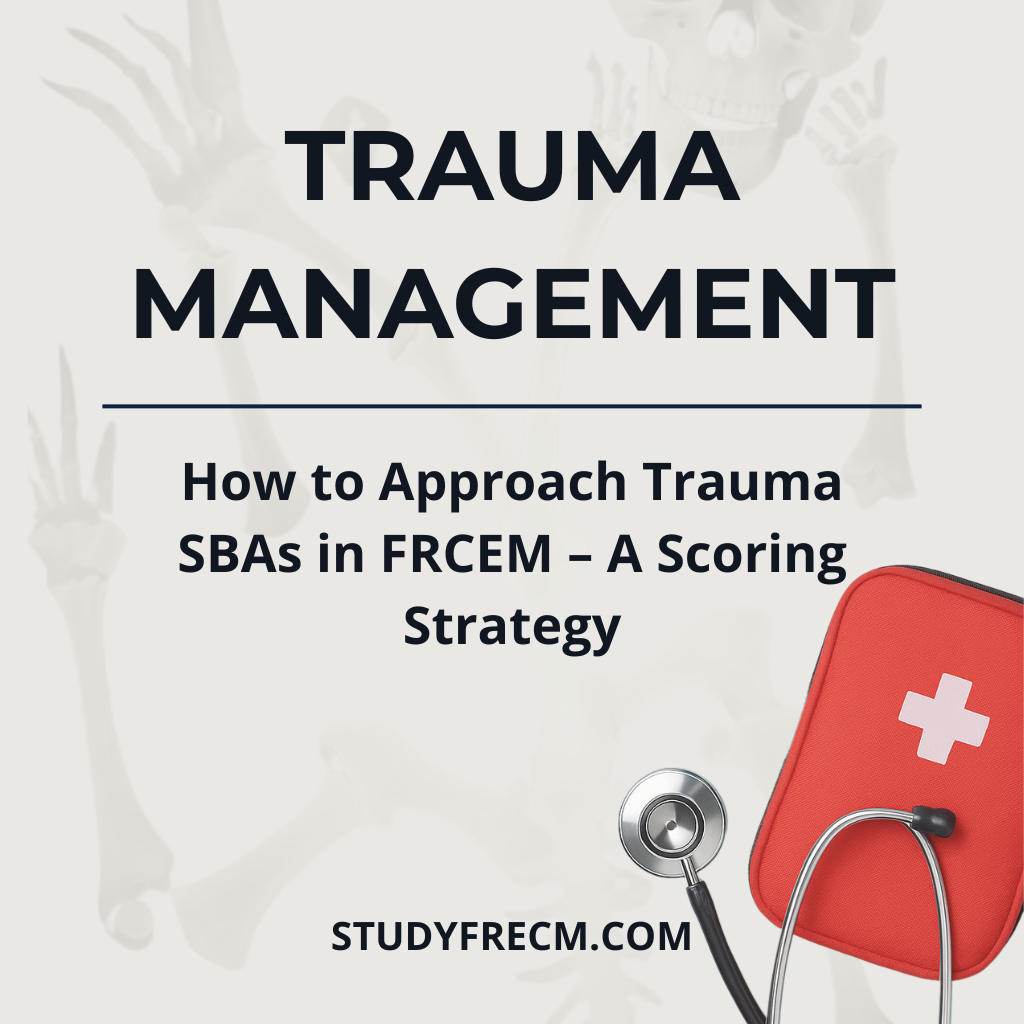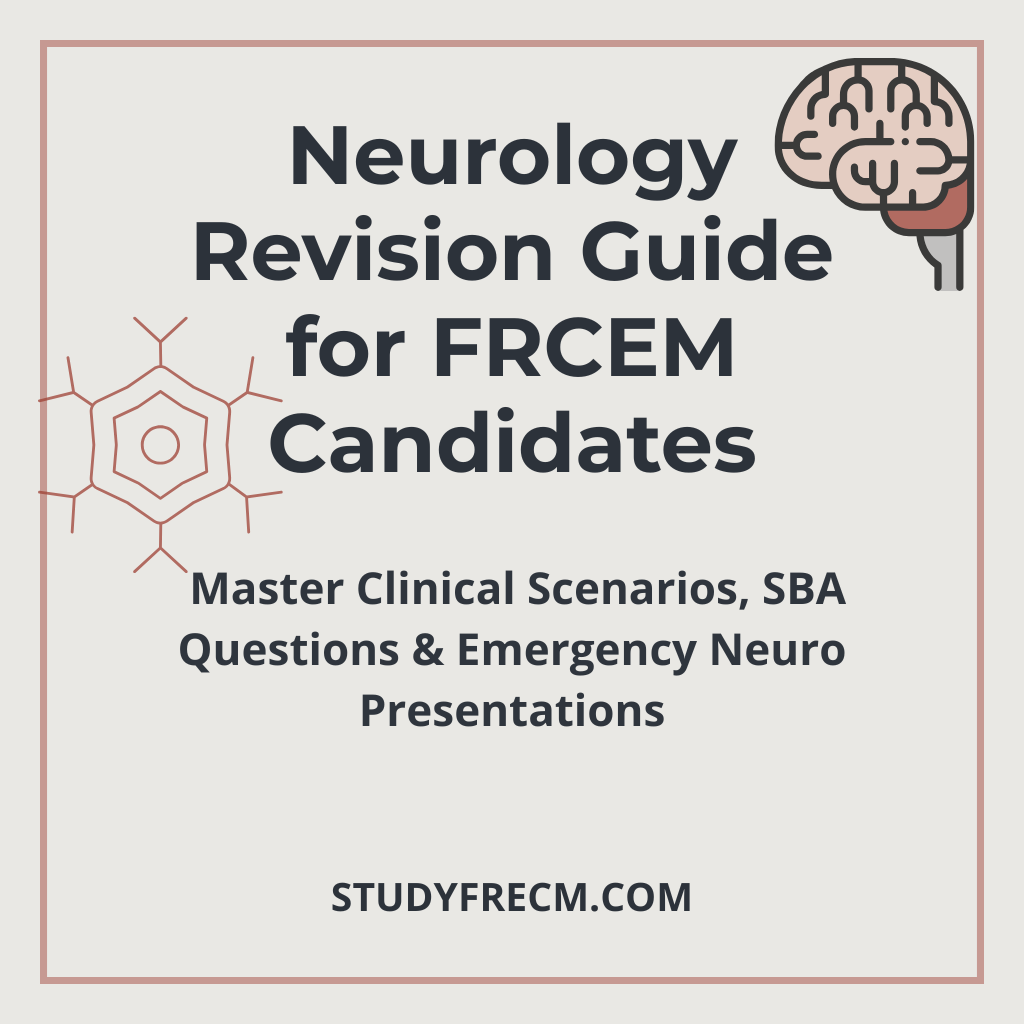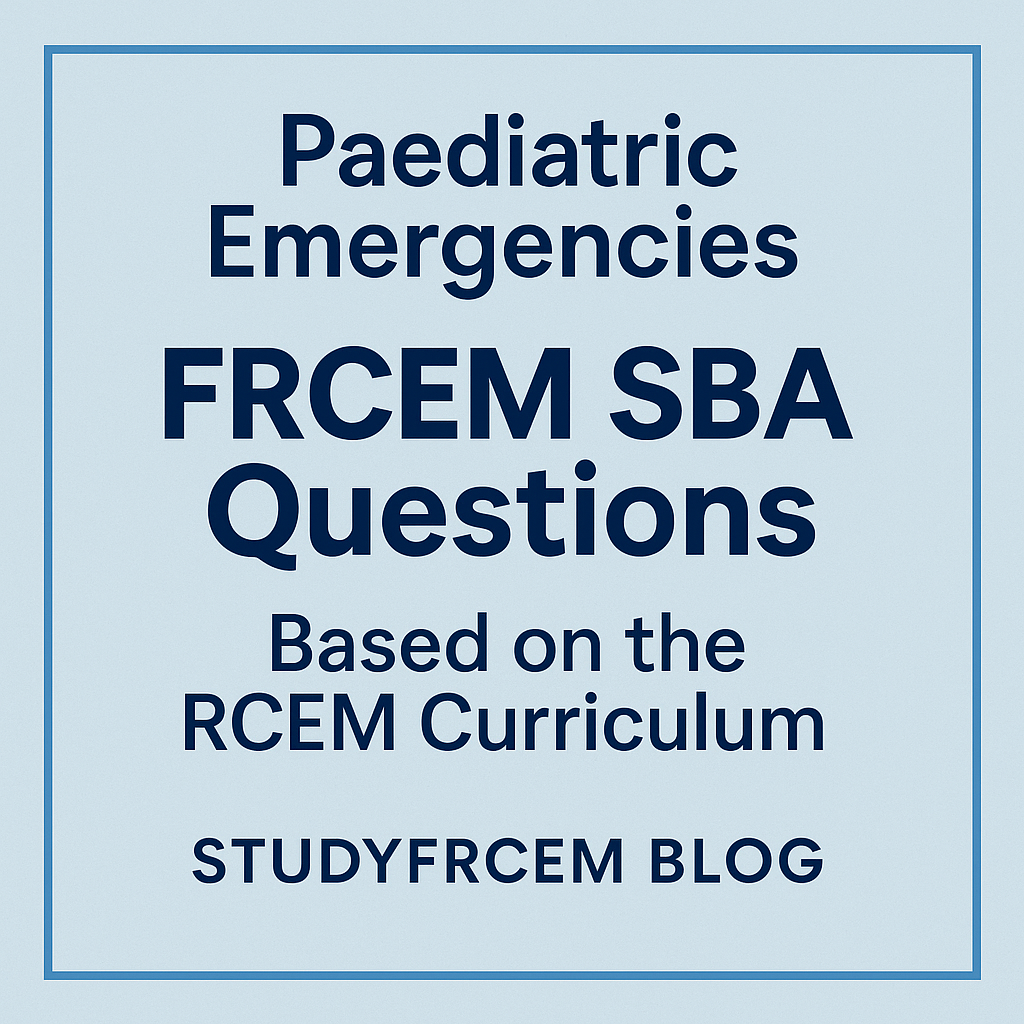If you are preparing for the FRCEM SBA exam, one section that always feels very simple yet often costs marks - is trauma management.
Most candidates know the content but fail to score because they approach the questions like clinicians rather than strategists.
In this guide, you will learn how to think like the exam identify scoring patterns, and avoid the traps that trip up even well prepared candidates. This isn't about memorizing protocols, its about maximizing marks using smart decision making.
Why Trauma SBAs Are High-Risk for Low Scores?
FRCEM trauma SBAs are not testing rare syndromes or obscure conditions. They're testing:
- Your ability to prioritize the next best step
- Whether you understand the order of emergency actions
- If you can spot and act on red flags immediately
In short — you’re being scored on urgency, safety, and order.
What the FRCEM SBA Format Wants
Before diving into trauma, let’s clarify something:
The FRCEM SBA format doesn’t care if multiple answers are technically correct. It wants the best single step right now.
That means:
- You can know everything about trauma — but still fail the question.
- You can spot the right diagnosis — but pick the wrong timing.
- You can select a valid answer — but miss the more urgent one.
This is why having a scoring strategy is essential.
Rule #1: Score Through the ABCDE Filter
Every trauma SBA should be approached through the ABCDE approach — not just in your clinical reasoning, but in how you pick the correct answer.
Ask yourself:
“Which part of the ABCDE process are we in?”
- If there's an airway compromise → fix that first.
- If the airway is intact but the patient is hypoxic and has chest signs → handle breathing (e.g. tension pneumothorax).
- If vitals show hypotension → go to circulation.
- If you’ve ruled out all life threats → then and only then consider imaging, fluids, or analgesia.
This isn’t trauma management. It’s exam-scoring logic.
Rule #2: Red Flags Beat Diagnostics
Every trauma SBA hides clues in the question stem. If you don’t spot them, you’ll choose the wrong tier of intervention.
Look for common trauma red flags:
- Tracheal deviation = tension pneumothorax
- Pelvic instability + hypotension = major internal bleed
- GCS ≤ 8 + lateralizing signs = raised ICP
- Burns + hoarseness/stridor = inhalation injury
- Distended abdomen + shock = intra-abdominal bleed
When red flags appear, go with the most immediate intervention, not confirmation or supportive care.
Rule #3: The "Correct" Answer Can Still Be Wrong
This is the most common mistake FRCEM candidates make.
Here’s an example:
Q: A 30-year-old is hit by a car. They are drowsy, have tracheal deviation to the left, and absent breath sounds on the right.
- A. Oxygen
- B. Intubate
- C. CT Chest
- D. Needle decompression
- E. IV Fluids
Many would pick intubation because the patient is drowsy.
But the real threat is a tension pneumothorax.
Correct: D – Needle decompression
That’s how you score. Because:
- CT is too late
- Fluids don’t fix the cause
- Oxygen helps but doesn’t decompress
- Intubation without decompressing first = worsens the outcome
Always ask: Is this answer treating the immediate threat?
Rule #4: Time = Score
Timing strategy:
- You have 90 seconds per SBA.
- If you're stuck, re-read the last line of the question. It usually says:
- “What is the most appropriate next step?”
- “Which action should be taken immediately?”
This tells you:
It’s not about what’s eventually needed.
It’s about what’s needed right now.
Eliminate answers that are:
- Diagnostic only
- Slower or less definitive
- Secondary support (e.g. fluids, pain relief)
Rule #5: Train Yourself to See Patterns
Scoring in trauma SBAs is about pattern recognition — not case-by-case logic.
The more you expose yourself to exam style trauma cases, the more you internalize what the SBA is asking you to do.
Use these question types repeatedly:
- Penetrating trauma with shock = explore for bleeding, activate MTP
- GCS drop post-head injury = urgent CT Head
- Burns + airway issues = prepare for intubation
- Spinal injury + hypotension = think neurogenic shock, not just fluids
Want to drill these patterns? Practice in our FRCEM SBA Bank
Sample SBA Question (Scoring Walkthrough)
Q: A 26-year-old is involved in a motorbike crash. He has a BP of 80/40, HR of 120, and an open pelvic fracture. What’s the immediate management?
- A. FAST Scan
- B. Pelvic binder
- C. IV Fluids
- D. CT Abdomen
- E. Transfusion
Think scoring logic:
- Red flag = hypotension + pelvic injury
- ABCDE → We’re in C (circulation)
- FAST Scan & CT = too slow
- Fluids = not definitive
- Binder = prevents further bleeding immediately
Answer: B – Pelvic Binder
Bonus: Quick Scoring Cheatsheet
SBA ClueScoring Step
Decreased GCS + trauma CT Head or Intubation
Tracheal deviation + absent sounds Needle decompression
Open pelvis + shock Pelvic binder + activate MTP
Facial burns + hoarse voice Anticipate difficult airway → Intubate
Flail chest Oxygen ± analgesia ± ventilatory support
Avoid These Mistakes
- Choosing CT or imaging when the question requires action
- Overthinking the “why” when the exam wants the “what now”
- Reading too quickly and skipping the real red flag
Fix them with focused revision. Start with our Trauma Strategy Guide
Helpful Links
- Practice Trauma SBA Questions – StudyFRCEM
- RCEM Curriculum 2021
- ATLS Trauma Summary – ACS
- NICE Head Injury Guidelines
Final Thoughts
Passing trauma SBAs isn’t about knowing the most. It’s about thinking in the right order, spotting danger early, and choosing what the question wants — not what you'd do in the rescue bay.
To score consistently:
- Stick to the ABCDE flow
- Pick actions that address immediate threats
- Practice until the patterns become automatically ready to apply this scoring strategy.
Explore more on StudyFRCEM.com, including mock exams, question banks, and high-yield trauma blogs like the ABCDE approach.






